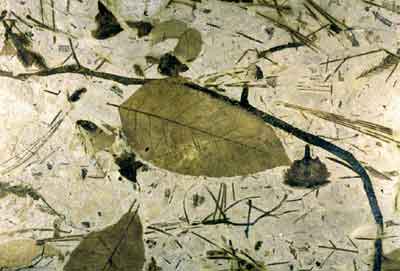The McAbee Forest

The time period when the McAbee forest was formed was a very warm interval in the Northern Hemisphere on planet Earth. Deposits of similar age record palm trees as far North as Alaska and crocodiles living in Wyoming and even up to the arctic circle in Canada. However, at McAbee and throughout the Okanangan Highlands temperate families predominate. Some of these are the first records of the modern plants we live with today. Besides allowing us to hypothesize about plant evolution, the fact that these plants still exist helps us understand the climate they grew in. It appears temperatures overall were cool but did not vary as much between winter and summer as they do today. In particular the winters were not as cold. Some of the plant families that were present require summer rains to thrive. The best modern analogues for the McAbee forests are the diverse forests of eastern North America and temperate Asia.
At the highest elevations spruce, fir and pine trees grew and are found in the fossil deposit primarily as needles, seeds and cones that survived transport to the lake. Closer to the lake the forests were dominated by elm, birch, alder and beech trees. These are represented by their leaves and reproductive parts. Approximately two-thirds of the fossils that can be identified are from plant families that still exist today but less than half of the rare leaves have been identified so far. When those rare elements are included we know that nearly one hundred different plant species were present. That means the forest 50 million years ago was much more diverse than the modern forests that grow in the region today.
